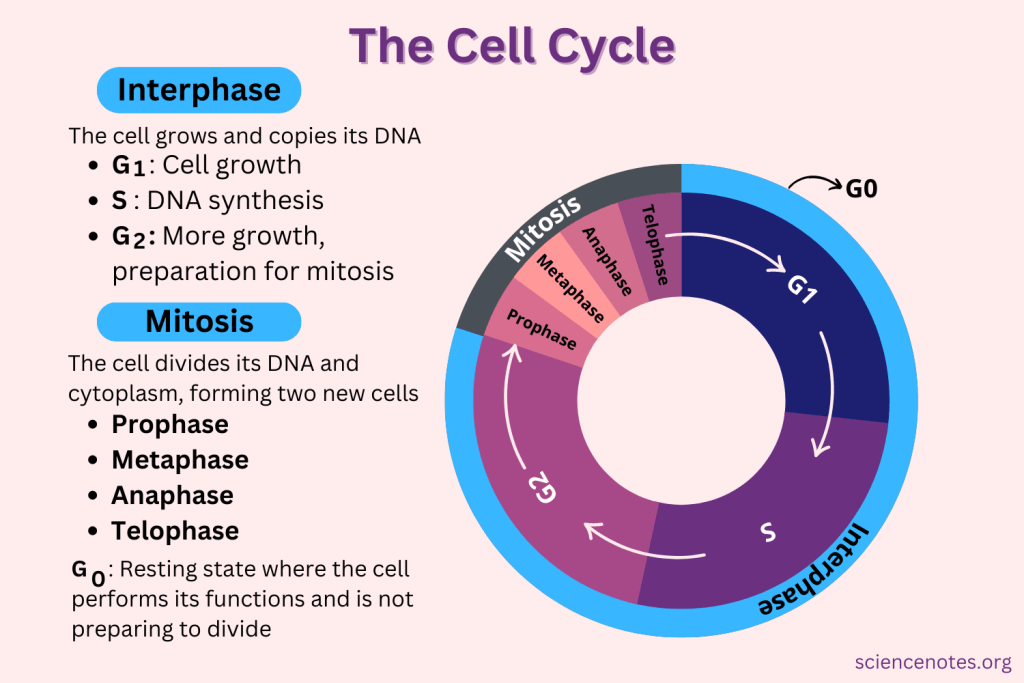Makindo Medical Notes"One small step for man, one large step for Makindo" |
|
|---|---|
| Download all this content in the Apps now Android App and Apple iPhone/Pad App | |
| MEDICAL DISCLAIMER: The contents are under continuing development and improvements and despite all efforts may contain errors of omission or fact. This is not to be used for the assessment, diagnosis, or management of patients. It should not be regarded as medical advice by healthcare workers or laypeople. It is for educational purposes only. Please adhere to your local protocols. Use the BNF for drug information. If you are unwell please seek urgent healthcare advice. If you do not accept this then please do not use the website. Makindo Ltd. |
Cell Cycle
-
| About | Anaesthetics and Critical Care | Anatomy | Biochemistry | Cardiology | Clinical Cases | CompSci | Crib | Dermatology | Differentials | Drugs | ENT | Electrocardiogram | Embryology | Emergency Medicine | Endocrinology | Ethics | Foundation Doctors | Gastroenterology | General Information | General Practice | Genetics | Geriatric Medicine | Guidelines | Haematology | Hepatology | Immunology | Infectious Diseases | Infographic | Investigations | Lists | Microbiology | Miscellaneous | Nephrology | Neuroanatomy | Neurology | Nutrition | OSCE | Obstetrics Gynaecology | Oncology | Ophthalmology | Oral Medicine and Dentistry | Paediatrics | Palliative | Pathology | Pharmacology | Physiology | Procedures | Psychiatry | Radiology | Respiratory | Resuscitation | Rheumatology | Statistics and Research | Stroke | Surgery | Toxicology | Trauma and Orthopaedics | Twitter | Urology
Related Subjects: |Autosomal Recessive |X Linked Recessive |Autosomal Dominant |Li Fraumeni syndrome |Genetic Linkage |Cell Cycle |DNA replication
The cell cycle is a series of phases that a cell undergoes to grow and divide. It is essential for growth, tissue repair, and reproduction in multicellular organisms. The cell cycle is divided into interphase and the mitotic phase.
Key Concepts
- Phases of the Cell Cycle :
- Interphase :
- G1 Phase (Gap 1) : Cell growth and preparation for DNA replication.
- S Phase (Synthesis) : DNA replication occurs, doubling the genetic material.
- G2 Phase (Gap 2) : Further cell growth and preparation for mitosis.
- Mitotic Phase (M Phase) :
- Mitosis : Division of the nucleus into two genetically identical daughter nuclei.
- Cytokinesis : Division of the cytoplasm, resulting in two separate daughter cells.
- Interphase :
- Checkpoints in the Cell Cycle :
- G1 Checkpoint : Determines if the cell has sufficient energy and nutrients to proceed with DNA replication.
- G2 Checkpoint : Ensures all DNA is replicated correctly and the cell is ready for mitosis.
- M Checkpoint : Ensures all chromosomes are correctly attached to the spindle fibers before anaphase.
- Regulation of the Cell Cycle :
- Cyclins and Cyclin-Dependent Kinases (CDKs) : Proteins that regulate the progression of the cell cycle through phosphorylation.
- p53 Protein : Tumour suppressor protein that can halt the cell cycle in response to DNA damage.
- RB Protein (Retinoblastoma Protein) : Regulates the G1 checkpoint, preventing excessive cell growth.

Detailed Phases of the Cell Cycle
- Interphase :
- G1 Phase :
- Cell grows in size and synthesizes mRNA and proteins required for DNA synthesis.
- Preparation for S phase.
- S Phase :
- DNA is replicated, resulting in two identical sister chromatids for each chromosome.
- Centrosome is duplicated.
- G2 Phase :
- Cell continues to grow and produces proteins necessary for mitosis.
- Checks for DNA damage and ensures all DNA is replicated.
- G1 Phase :
- Mitotic Phase :
- Mitosis :
- Prophase : Chromosomes condense, and spindle fibers begin to form.
- Prometaphase : Nuclear envelope breaks down, and spindle fibers attach to kinetochores.
- Metaphase : Chromosomes align at the metaphase plate.
- Anaphase : Sister chromatids are pulled apart to opposite poles of the cell.
- Telophase : Nuclear envelopes re-form around the separated chromatids, now considered chromosomes.
- Cytokinesis :
- Division of the cytoplasm into two daughter cells.
- In animal cells, a cleavage furrow forms to separate the cells.
- In plant cells, a cell plate forms to divide the cells.
- Mitosis :
Clinical Relevance
- Cancer :
- Uncontrolled cell division due to mutations in genes regulating the cell cycle.
- Common mutations include those in the p53 and RB genes.
- Genetic Disorders :
- Mutations affecting cell cycle regulation can lead to developmental abnormalities.
- Cell Cycle Inhibitors :
- Drugs that target specific phases of the cell cycle to treat cancer (e.g., taxanes, anthracyclines).
Summary
The cell cycle is a critical process for growth, development, and maintenance of multicellular organisms. It consists of interphase (G1, S, G2 phases) and the mitotic phase (mitosis and cytokinesis). The cell cycle is tightly regulated by checkpoints, cyclins, and CDKs to ensure proper cell division and prevent uncontrolled cell proliferation, which is a hallmark of cancer.